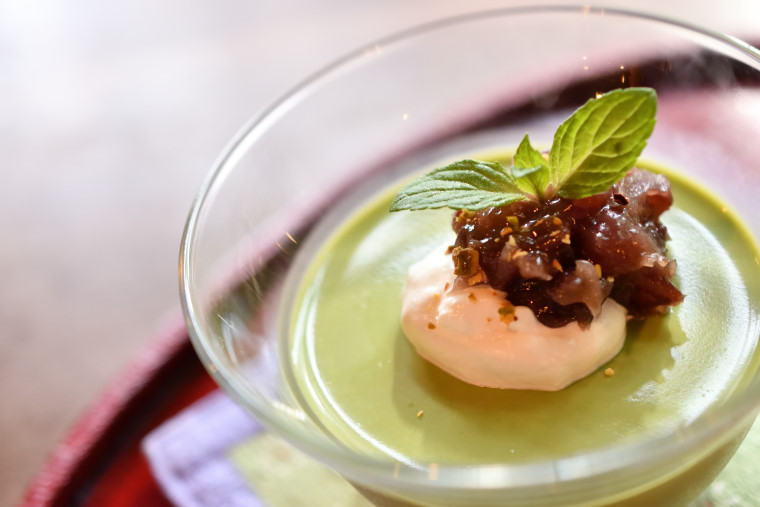Shooting Charming Travel Photos with a Macro Lens: 40 mm
A macro lens lets you get so close to your subject that you’re almost touching
it; by taking one with you on your next trip you can create a whole new genre of vacation
photo.
Get Close to Subjects
That Catch Your Eye
Macro lenses bring you closer to
your subject than your usual lens.
To photograph a flower so that the stamens are visible, choose the most conspicuous,
beautiful flower as the main subject and focus on the tips of the stamens. The result
will be an impressive photo in which the remaining flowers and background are slightly
blurred.
Similarly, when photographing a serving of food, choose the
most mouth-watering portion as the main subject and focus on that. If you find that
shooting at maximum aperture blurs the remainder of the portion so much that it is
no longer clear what sort of dish it is, stop aperture down a little at a time to
adjust the depth of field. Tilting the camera slightly to shoot from an angle creates
more depth than shooting from directly above.
Fast Lens = Perfect Indoor Portraits
A macro lens does not have to be used only at short range, but can also be used as
fixed-focal-length standard lens for snapshots.
The sample showing a portrait subject with a Japanese sweet would have had too shallow
a depth of field at maximum aperture, so I stopped aperture down to f/5.6 to get the
best bokeh. Raising exposure compensation to +0.3 to 0.7 or so makes the photo ever
so slightly brighter, enhancing the woman’s complexion. The “Portrait”
Picture Control, which produces a softer overall image, is particularly recommended
in a situation like this.
Stopping
Aperture Down for Landscapes
Here’s an impressive subject that extends uninterrupted from the foreground
into the background. Find a spot where the gates line up with no visible gaps for
a continuous, uninterrupted view. Set aperture to f/8 so that the distant gates are
not blurred. Choosing the “Landscape” Picture Control brings out the reds
and greens without making them too vivid.
Catching a Fleeting Expression on the Sly
An aperture of about f/5.6 to 6.5 is recommended for snapshots shot with macro
lenses and other fixed-focal-length, non-zoom lenses. The results are close to what
one would see with the naked eye for natural-looking photos with ever-so-slightly
distorted bokeh.
Instead of taking all your photos with the subject looking at the camera, add some
variety to the albums or photobooks you will create at a later date by taking a few
shots where the subjects have momentarily shifted their gaze or are distracted by
something off camera.
Keep
Diagonals in Mind When Composing Shots of Static Subjects
To create depth in photos of small objects evenly arranged in a line, shoot at an
angle so that blur increases as the objects recede into the background. Shoot at maximum
aperture and focus on the most conspicuously colored part of the cup closest to the
camera. Remember that you can get as close as you like when using a macro lens: be
careful not to bump the subject while framing the shot. When shooting colorful subjects,
choose the “Vivid” Picture Control to make the colors even more lively
and bright.
Using a macro lens doesn’t mean that you have
to get close to your subject, any more than using a wide-aperture lens means you are
obliged to blur the background: you can also use it as a fixed-focal-length standard
lens to take portraits and snapshots, or stop aperture down for travel photos that
include the background.







